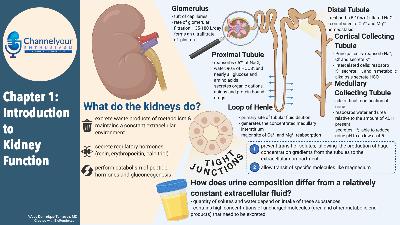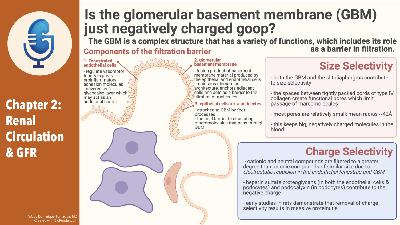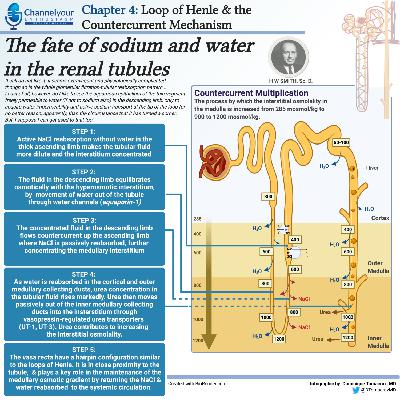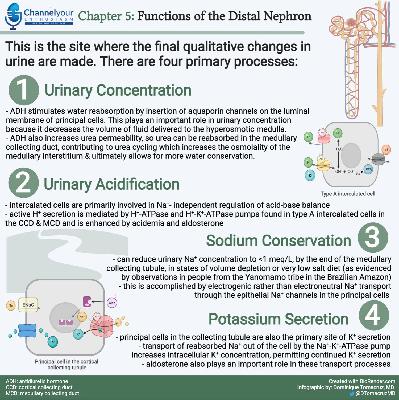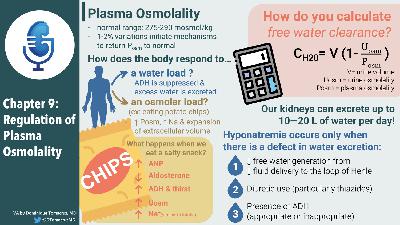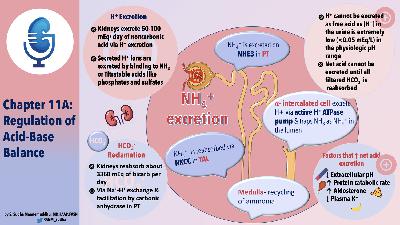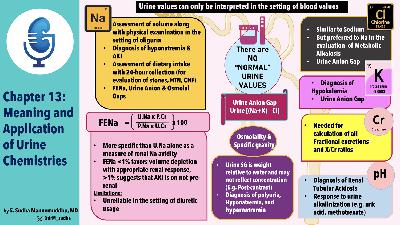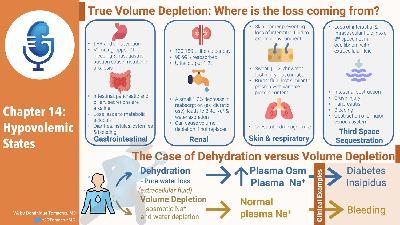Chapter Three: The Proximal Tubule
Description
Chapter Three: How the proximal tubule is like Elizabeth Warren and other truths my friends from Boston taught me
<figure class="
sqs-block-image-figure
intrinsic
">

</figure>
<figure class="
sqs-block-image-figure
intrinsic
">

</figure>
References for Chapter 3:
Faisy C, Meziani F, PLanquette B et al. Effect of Acetazolamide vs. Placebo on Duration of Invasive Mechanical Ventilation among patients with chronic obstructive pulmonary disease: a randomized clinical trial. JAMA 2016 https://pubmed.ncbi.nlm.nih.gov/26836730/
This randomized controlled double blinded multi-center study of acetazolamide to shorten the duration of mechanical ventilation (known as DIABLO) there was no statistically significant difference (though it may have been underpowered to do so).
Salazar H, Swanson J, Mozo K, White AC, Cabda MM Acute Mountain sickness impact among travelers to Cusco, Peru J Travel Med 2012 https://pubmed.ncbi.nlm.nih.gov/22776382/
Investigators found that altitude sickness is common and alters travel plans for 1 in 5 travelers but was prescribed infrequently.
Buzas GM and Supuran CT. Journal of enzyme inhibition and medicinal chemistry 2015 https://www.tandfonline.com/doi/full/10.3109/14756366.2015.1051042
This review describes the use of acetazolamide to treat peptic ulcers and how it was later learned that H. pylori have carbonic anhydrase
NORDIC idiopathic intracranial Hypertension Study Writing Committee. The effect of acetazolamide on visual function in patients with idiopathic intracranial hypertension and mild visual loss: the idiopathic intracranial hypertension treatment trial. JAMA 2014 https://pubmed.ncbi.nlm.nih.gov/24756514/
In this multi-centered trial, acetazolamide and low sodium weight reduction diet improved mild visual loss more than diet alone.
Mullens W et al. Rationale and design of the ADVOR (acetazolamide in decompensated heart failure with volume overload trial) Eur J Heart Failure 2018 https://pubmed.ncbi.nlm.nih.gov/30238574/
This reference explains the rationale for this ongoing trial.
Gordon CE, Vantzelfde S and Francis JM. Acetazolamide in Lithium-induced nephrogenic diabetes insipidus NEJM 2016 https://www.nejm.org/doi/full/10.1056/NEJMc1609483
A case report of efficacy of acetazolamide in a patient with severe polyuria.
Zehnder D et al. Expression of 25-hydroxyvitamin D-1alpha hydroxylase in the human kidney. JASN 1999
This report explores the activity in the enzyme in nephron segments and suggests that the distal nephron may play an important part in the formation of 1,25 vitamin D https://jasn.asnjournals.org/content/10/12/2465
Outline: Chapter 3
- This is chapter three, kind of the first real chapter of the book
- Proximal Tubule
- Reabsorbs 55-60% of the filtrate
- Active sodium resorption
- 65% of the sodium
- 55% of the chloride
- 90% of HCO3
- 100% glucose and amino acids
- Passive water resorption
- Water resorption is isosmotic
- Secretion of
- Hydrogen
- Organic anions
- Organic cations
- Anatomy
- S1, S2, S3 can be differentiated by peptidases
- S1 more sodium resorption and hydrogen secretion, high capacity
- S2 more organic ion secretion
- Cell model
- Basolateral membrane
- Na-K-ATPase powers all the resorption
- Luminal membrane
- 100 liters a day crosses the proximal tubule cells
- Microvilli to increase surface area
- Microvilli has brush border which has carrier proteins as well as carbonic anhydrase
- Water permeable, so sodium resorption leads to water resorption
- Aquaporin-1 (sounds like this transporter is unique to the proximal tubule and RBC)
- HCO3 is reabsorbed early, along with Na, resulting in increased chloride concentration which passively reabsorbed via paracellular route.
- Tight junction has only one strand (on freeze fracture) as opposed to 8 in distal nephron
- The Na-K-ATPase
- Lower activity than in the LOH and distal nephron
- Maintained intracellular Na at effective concentration of 30 mmol/L
- Interior of the cell is negative due to 3 sodium out and 2 K in, then K leaks back out.
- 3 Na out for 2 K in
- An ATP sensitive K outflow channel on the basolateral membrane
- Increased ATP slows potassium eflux
- The idea is if Na-K slows, ATP will accumulate and this will slow K leaving, because there is less potassium entering.
- K channel is ATP sensitive, ATP antagonizes K leak.
- Highly favorable ELECTROCHEMICAL gradient for sodium to flow into the cell through the luminal membrane
- Must be via a channel or carrier
- Cotransporters
- Amino acids
- Phosphate
- Glucose
- Called secondary active transport
- Countertransporters
- Only example is H excretion
- Basolateral membrane
- Na-3HCO3 transporter
- Powered by the negative charge in the cell
- Chloride resorption
- Formate chloride exchanger
- Formate combines with hydrogen in the lumen, becomes neutral formic acid, and is reabsorbed where the higher pH causes it to dissociate and recycle again.
- Dependent on continued H+ secretion
- Chloride moves across basolateral membrane thanks to Cl and KCl transporters, taking advantage of negative intracellular charge
- Passive mechanisms of proximal tubule transport
- Accounts for one third of fluid resorption
- Mechanism
- Early proximal tubule resorts most of the bicarb and less of the chloride
- Tubular fluid gets a high chloride concentration
- Chloride flows through the tight junction down its concentration gradient
- Sodium and water follow passively behind
- Water moves osmotically into intercellular space from tubular fluid even though the osmolalities are equal since chloride is an ineffective osmole, so tonicity is not the same. ******
- Argues that bicarb is primarily important solute for passive resorbtion
- Acetazolamide blocks Na and chloride resorption
- Similar thing happens with metabolic acidosis where less bicarb is available to drive passive resorbtion of Na and Cl
- Summary
- O


